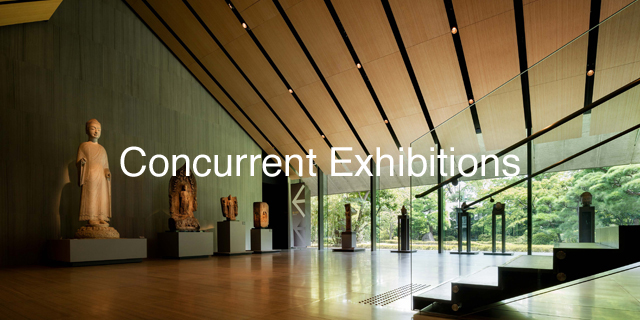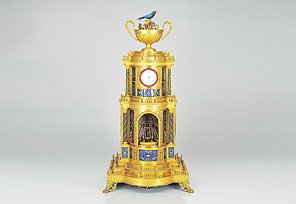
During “The Tales of Ise : Courtly Love and Poems Reflected in the Arts" Saturday, Saturday, November 1st – Sunday, December 7th, 2025)
- The Tales of Ise : Courtly Love and Poems Reflected in the Arts (cont'd)
- An epoch-making event in the history of The Tales of Ise was its early Edo publication in illustrated woodblock printed book (Sagabon) format. The printed version made the tales accessible to many more people and also inspired the creation of sundry paintings.
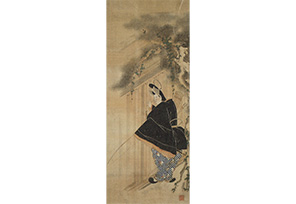


- A Scene from the Tales of Ise: Sacred Bow
Iwasa Matabei - Hanging scroll; ink and color on paper
- Japan Edo period, 17th century
Agency for Cultural Affairs
- The Allure of Buddhist Art: Buddhist Sculptures Created in the Early Modern Period
- Gallery 3 presents a Buddhist sculpture from the late medieval period (15th to 16th century) and masterpieces of early modern Buddhist sculpture.
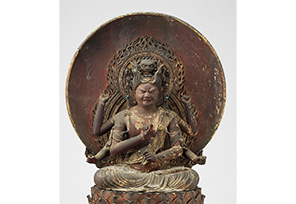

- Seated Aizen-myōō (Rāgarāja)
- Wood with polychromy
- Japan Edo period, 17th century
Nezu Museum
- Ancient Chinese Bronzes
- The Nezu Museum collection of bronzes is world-renowned, and particularly strong in the area of late Shang (17th to 11th centuries BC) dynasty vessels, the pinnacle production period of this medium.
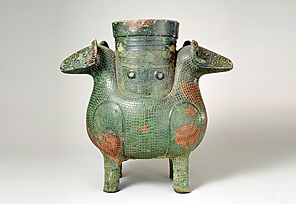


- Double-Ram Zun
- Bronze
- China; probably Hunan province, 13th-11th centuries BC
Nezu Museum
- The Tales of Ise : Courtly Love and Poems Reflected in the Arts (cont'd)
- Depictions of The Tales of Ise include both works that illustrate the stories themselves and rarer examples that focus on the content of the waka poems included in those stories and scenes associated with those poems. That is, both the monogatari-e (narrative painting) and the uta-e (poem-painting) traditions persisted.
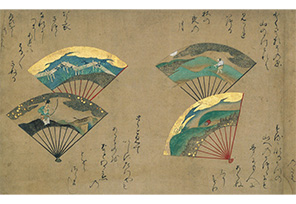

- Scroll of Fan-shaped Paintings with Waka
- Handscroll; ink and color on paper
- Japan Edo period, 17th century
Nezu Museum
- The Tea New Year: Breaking the Seal on the New Tea
- In November, tea gatherings are held to break the seal on the jar that stores tea leaves that were picked in the early summer and to drink the new tea for the first time. In the world of tea, this event is considered the beginning of the New Year.
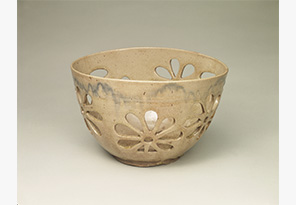

- Tea Leaf Storage Jar, Named Nagato
Fujian ware - Ceramic
- China Yuan-Ming dynasties, 14-15th centuries
Nezu Museum
